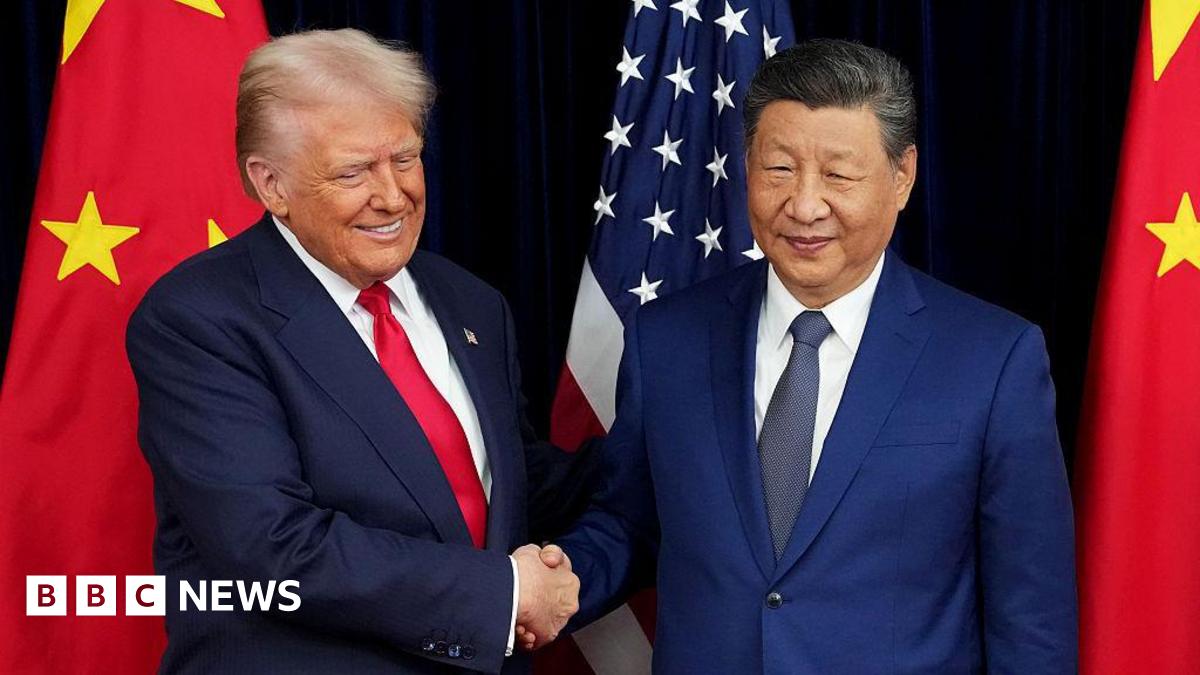A timeline of the US tariffs on Chinese goodspublished at 06:23 GMT
 Osmond Chia
Osmond Chia
Business reporter
Here’s a look at how US tariffs on Chinese goods have changed during President Trump’s second term so far.
February: Trump imposes a 10% tariff on Chinese goods due to what he said was the flow of the drug fentanyl to the US.
March: The president adds another 10% tariff on goods from China, accusing it of not doing enough to address the fentanyl flow to the US.
April: Trump adds a 34% levy on all Chinese imports as part of his sweeping “Liberation Day” tariffs. This brings the total to 54% on Chinese goods. This is on top of sector-specific tariffs, which means some Chinese imports are facing far higher tariffs.
May: The US and China reach an agreement to cool trade tensions after weeks of escalating tit-for-tat measures.The two sides agree to roll back tariffs – at this point rates have shot past 100% on both sides – they had each imposed since April.
But the 20% levy the US had originally imposed in February stays – so the Chinese face a 30% tariff.
30 October: On Thursday, after talks with Xi Jinping, Trump tells reporters he has agreed to lower the “fentanyl tariff” to 10% from 20%, possibly a reference to the February levies.
But it’s worth remembering that Chinese imports in difference sectors face different tariffs, including some from before Trump took office. And those tariffs on steel, timber and other commodities are still in place.
So it’s not clear yet how exactly Thursday’s tariff announcement affects various sectors. We will have to wait for more clarity from the White House.
